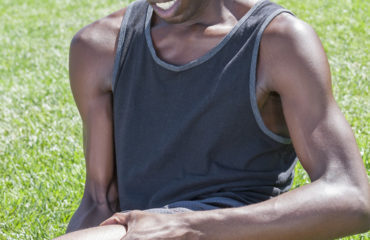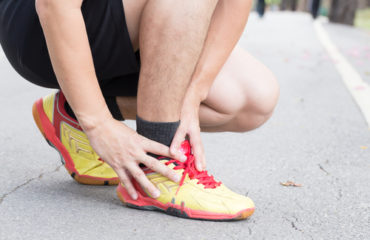An ACL injury is an often debilitating injury to the knee. This disability is commonly heard of in athletes due to indirect contact tears and ruptures. The cause of the injury is due to the anterior cruciate ligament becoming subject to a tear that can range from minor to a complete one. The primary problem with a torn ACL is that it causes instability of the knee and a strain on other ligaments.
with a torn ACL is that it causes instability of the knee and a strain on other ligaments.
Causes
The ACL is torn when it is stretched past its limit. The maximum position of the knee is generally around 10 percent beyond a straightened knee. When pushed past that limit, it is called hyperextension and the lower leg is pushed forward in comparison to the upper leg. This often occurs when a person is participating in an activity where they gain momentum and then the knee is impacted and twists unnaturally.
Symptoms
An ACL can be identified when the following occurs:
- A popping sound
- Swelling
- Instability
- Pain (moderate to severe)
Treatment Options
Treatment of the ACL can involve surgery or take a more conservative route and rehabilitate the knee without surgery. These modalities can help to nurse the knee back to health and with patience and can allow some patients to avoid an invasive surgery. The following alternate modalities are used in an effort to treat ACL injuries without undergoing surgery.
Cryotherapy is best when used within 36 hours of an ACL injury in sprains with a grade of 3 or 4. After applying ice to the injury, patients showed results for a quicker return to activities by improving recovery time by four days in grade 3 sprains, and improving grade 4 sprains by 17 days. After damaging the tissues, the knee becomes acutely inflamed. Cryotherapy has been shown to reduce edema using vasoconstriction. The tissues metabolic demand is lowered, which reduces the amount of hypoxic damage. The histamine and capillary damage is also reduced by cold exposure.
Nerve conduction velocity causes an analgesic effect, which can help reduce pain. It also causes an analgesic effect on inflammation, allowing for more rigorous exercise in therapy. In the sub-acute stages, ice should be used intermittently for about 15 minutes per session in order to help stop spasms of the muscles and muscle tension.
Thermotherapy
By applying heat to the tissues, the surrounding and underlying tissues can help to increase the range of motion. This treatment modality is referred to as thermotherapy.
TENS
This is an application that uses electrical stimulation in order to improve strength after an ACL reconstruction. Transcutaneous electrical neural stimulation (TENS) covers the complete range of transcutaneously applied currents used for nerve excitation.
Ultrasound
 An ultrasound can be used in order to increase the healing rate of the bone and tendon interface. It helps to decrease the inflammation in soft tissue, increase the extensibility of tissue, remodel scar tissue, heal soft tissue, decrease the pain, and lower the swelling of the soft tissue.
An ultrasound can be used in order to increase the healing rate of the bone and tendon interface. It helps to decrease the inflammation in soft tissue, increase the extensibility of tissue, remodel scar tissue, heal soft tissue, decrease the pain, and lower the swelling of the soft tissue.
Phonophoresis
In a study, it was found that over half of the patients have used this medication for reducing the inflammation of their soft tissue, managing pain, and healing that soft tissue. Pnonophoresis is the use of ultrasound to improve the delivery of topical drugs, and it provides an anti-inflammatory and analgesic effect.
Water Based Exercising
Working out in the water helps to take the pressure off of the ligament and muscles. When swimming in warm water the muscles can relax, while allowing for stretching. The water can help to reduce the swelling and increase circulation. The resistance of the water is multi-planar and allows for postural awareness.




